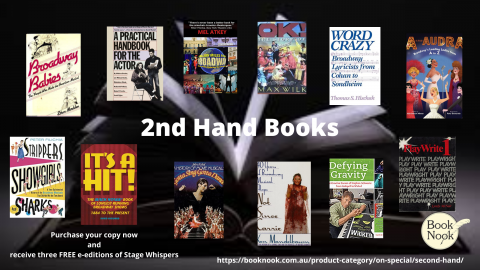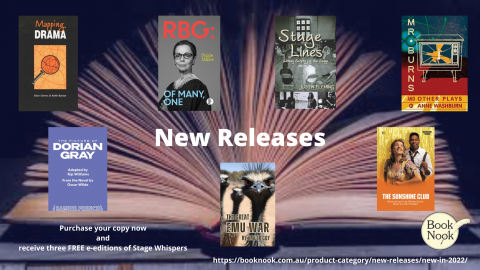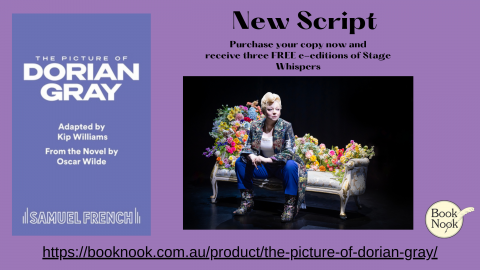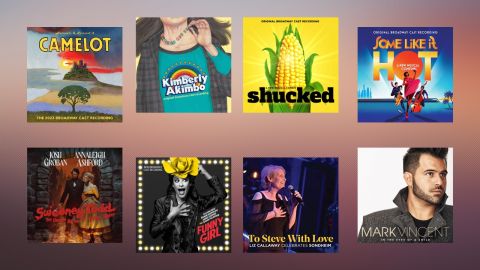Book Review: Carole Raye – Funny Business
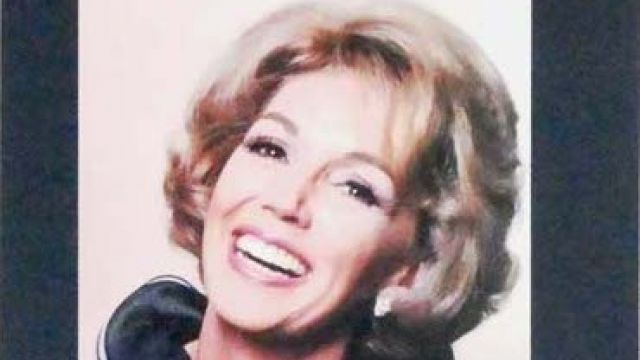
By John Senczuk (Australian Scholarly Publishing $39.95 - Buy it here.)
In 1964, The Mavis Bramston Show swept across Australian television, and TV would never be the same again. Created by and starring Carol Raye, with Gordon Chater and Barry Creyton, this one-hour of sparkling satire took the pomp and pomposity out of our sacred cows with delicious accuracy. It was based on the BBC’s That Was The Week That Was, which was hosted by David Frost and Millicent Martin.
Australia watched, and Qantas pilots even changed their schedules so they could catch the show. It was a phenomenon. Chater was the mainstay of the Phillip Street Theatre, Creyton was the villain of George Miller’s Music Hall in Neutral Bay, but who was Carole Raye? Little did Australians know at the time, but she was already a fully-fledged star.
This biography by John Senczuk is a marvelous nuts and bolts account of Raye’s accomplishments on the West End stage, her career in English films, and her time in South Africa before coming to Australia.
Raye was born Kathleen Mary Corkrey, the daughter of a Royal Naval Supply Officer, and his wife, who played piano for silent movies.
Her first stage performance was at the end-of-the-pier Southsea Theatre in No, No, Nanette, which saw her playing the leading role. She was only 16.
Bobby Get Your Gun, which starred Bobby Howes, Wylie Watson and Bertha Belmore, had been a moderate hit in London, but a provincial tour was planned. Carol had been taking classes with Freddie Carpenter in Dean Street, London, and this in turn led to her being cast in the show and her name change from Corkrey to Raye. Her next show Laugh, Clown, Laugh! also had a name change, to Funny Side Up, when it opened at Blackpool’s 3000 seater Opera House. A revue which starred Florence Desmond, Stanley Lupino, and Sally Gray, it was notable as the first time that Raye was likened in the reviews to Jessie Matthews. Later Raye appeared in Evergreen (one of Matthews’ hits) in a radio production for the BBC.
 Fun and Games gave Raye her West End debut at Prince’s Theatre, and her most impressive performance to date. Loosely based on a Hans Christian Anderson fairytale, the ‘Old Shoemaker’ sketch gave Raye a chance to use her balletic skills as a fresh-faced young dancer trying on ballet shoes, and Richard Herne as the old shop shoemaker reliving his past.
Fun and Games gave Raye her West End debut at Prince’s Theatre, and her most impressive performance to date. Loosely based on a Hans Christian Anderson fairytale, the ‘Old Shoemaker’ sketch gave Raye a chance to use her balletic skills as a fresh-faced young dancer trying on ballet shoes, and Richard Herne as the old shop shoemaker reliving his past.
Cyril Ritchard and Madge Elliott headed a revival of The Merry Widow with Raye as ‘Frou Frou’, and Arthur Askey’s first foray into a book musical, The Love Racket, provided her with her first ‘featured’ billing in publicity.
1943 was the year she moved to films, with Strawberry Roan, a movie set in Wiltshire and about a farmer who falls in love with a chorus girl. It was the ideal role for Raye and allowed her to combine her dancing expertise with her equestrian ability.
Waltz Time was probably her most successful film. A romance set in Austria, it starred Raye as Grand Duchess Maria, opposite Peter Graves as Count Franz von Hofer. Set in Old Vienna, when the waltz was considered immoral, its complicated story involved masks and a ring of betrothal.
After a round of publicity in the U.S. for the film, Raye returned to England and her next movie, Spring Song. It again featured Graves as a handsome test-pilot, Captain Tony Winter, and Raye as an actress Janet Ware, the owner of an heirloom brooch. Pre-publicity made much of the pairing of Raye with Broadway dancer Jack Billings and their dance number ‘Give Me a Chance to Dance’, which went through every type of dance from tap, soft-shoe, jazz, waltz and ballet.
On a publicity trip for While I Live in the U.S., Raye joined the Broadway bound, Bonanza Bound, a Comden and Green musical about the ’98 Alaska gold rush. It was exciting for Raye to be going to Broadway, but the excitement soon soured when the show folded in Philadelphia.
On her return Raye immediately went to work on two TV musicals, Yes, Madam? and Happy Weekend, followed by Vivian Ellis’ new musical Tough At The Top, about a Ruritanian Princess (Raye), and a musically-minded Boxer (George Tozzi), set in Edwardian London. Against the American imports (Kiss Me, Kate/Annie Get Your Gun / Oklahoma!) it didn’t stand a chance, but Dear Miss Phoebe, in which she got top billing, did. It was a musical version of Sir James Barrie’s Quality Street, with music by Harry Parr Davies and lyrics by Chrstopher Hassell, Ivor Novello’s lyricist.
During her career Raye had had several marriage proposals, but she eventually said ‘yes’ to Yorkshireman and veterinarian Robert Ayre-Smith, whose job that took them to South Africa when he was posted to Kenya. It was the time of the Mau Mau, a secret organization determined to drive the white man out of Africa. Safety was the important issue and they carried guns at all times. Raye even had one in her apron.
TV came to Africa in 1962 and Raye was as its forefront, behind the camera and in front of it. She developed the first local programs Here and There, TV Fare, and With Reservations.
When Ayre-Smith was posted to Australia, Raye followed, along with their three children. They set up base in Epping and then came Mavis. She spent two years on and off with the show, and then freelanced on local drama and variety programs, I’ve Got A Secret, Beauty and the Beast and Riptide. David Sale created the Phillip Revue Lie Back and Enjoy It for her, in which she played opposite Hazel Phillips, and an ensemble that included Beryl Cheers, Al Thomas and Max Phipps, and successfully toured in David Williamson’s Travelling North, with Frank Wilson.
One of her most popular appearances was as a guest on Graham Kennedy’s Blankety Blanks, where her witty asides enhanced the format. It was during the stage season of The Pleasure of His Company that Raye was surprised to be asked to appear on This Is Your Life.
Raye stood twice for a seat in Federal Parliament, and failed, but she did accept a three year appointment to the Theatre Board of the Australia Council. Ray officially retired in 2000, following a guest appearance on SeaChange, a program produced by her daughter, Sally Jane Ayre-Smith.
Raye’s husband died in 2016 and Raye in 2022, a few months shy of her 100th birthday. She was posthumously awarded the AM in the Queen’s Birthday 2022 honors ‘for significant service to the performing arts as an actor and producer’. She is survived by her children Sally, Mark and Harriet, and three grandchildren.
It is only half the story, as author Senczuk says, ‘her family, her marriage, and her children all belong to a private life,’ and that’s another book. He’s done a particularly good job of seeding the life and times of Britain throughout the Second World War, helped by Raye’s scrapbooks (meticulously maintained by her mother Ethel), and there’s a long history of the Corkrey family in Ireland and Britain. There’s also a detailed show index, as well as a general index, and a marvelous selection of B&W photos, never seen before, from regional and London papers.
Reviewed by Peter Pinne


